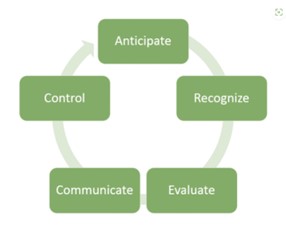Whether it’s in construction, manufacturing, oil & gas, or agriculture, every workplace has its own associated set of risks, which may lead to injuries and illnesses. Apart from the obvious threat of harm to the welfare of employees, poor workplace risk management can also be costly to the employer in terms of lost working hours and decreased productivity. This is why every industry needs to take measures to ensure industrial hygiene. By adopting a programme of industrial hygiene in the workplace, employers can reduce their employees’ exposure to every feasible type of hazard, making for a safer, happier, and more productive workplace. With its rapid industrialisation since the turn of the millennium, industrial hygiene services are in particularly high demand in the ASEAN region.
What is industrial hygiene?
Sometimes known as occupational hygiene, industrial hygiene is an area of expertise dedicated to the systematic reduction of any workplace risk which may lead to sickness, injury, or health impairment among workers.
Industrial hygiene is distinct from the field of health & safety in its reliance on scientific knowledge and empirical methods of enquiry to determine and mitigate levels of workplace risk. Health & safety, on the other hand, is based on compliance with regulatory standards relating to protocols, training, equipment, and so on.
Industrial hygiene is about eliminating or reducing the risk posed by hazards which can be classified into five broad categories:
Airborne hazards
Any work that involves exposure to particulates, gas, or vapour is potentially hazardous. For example, work underground or in tight spaces may result in workers being exposed to elevated levels of carbon dioxide; or work that involves the grinding, sanding or burning of materials like stone, wood, or grain produces potentially harmful particulate dust which workers need to be protected from.
Chemical hazards
In industrial processes, chemicals may take many forms, and present various types of risk. For example, whether in solid, liquid, or gas form, chemicals may irritate or corrode the skin; or as vapour, fumes, and dust they may be harmful to the respiratory tract and lungs when inhaled. Industrial hygiene deals with keeping the concentration of potentially harmful chemicals at safe levels.
Biological hazards
Biological hazards may be present in work that entails potential contact with bacteria, viruses, or fungi, such as in healthcare, agriculture, or food processing. Any type of exposure to such microscopic living organisms may result in acute or even chronic infection and illness.
Ergonomic hazards
When workers are required to lift heavy items or perform the same repetitive motion task for hours on end, like in manufacturing, they may be putting their bodies under a high degree of stress and strain. Poor ergonomic practices may result in injuries which leave the employee temporarily unable to do their job, or which in worst-case scenarios may be permanently debilitating.
Physical hazards
Over-exposure to any type of physical or sensory stimulant produces its own risk. For example, working in extremely noisy environments may damage hearing, and working in very high temperatures may induce heat stroke or skin irritation. Although only relevant to a niche set of industries, exposure to both ionising radiation (e.g. X-rays) and non-ionising radiation (e.g. radio waves), can also present a risk to health above certain levels.
What does an industrial hygienist actually do?
The industrial hygienist is like the Sherlock Holmes of hazard prevention. They will use all the scientific knowledge, tools, and observation skills at their disposal to uncover any potential hazards at the worksite they are called to. On arrival at a worksite, the industrial hygienist embarks on a five-stage process which involves:

- Anticipating: In understanding the systems, processes and protocols in place at the worksite, and through an in-depth knowledge of the substances, materials, tools, and equipment in play, the industrial hygienist can foresee any potential risks they may come across.
- Recognising: Once all potential hazards are anticipated, the industrial hygienist knows exactly what hazards to look for and where to look for them. This discovery process may involve a combination of equipment inspection, observation, sampling, and conversations with employees.
- Evaluating: Now that all hazards at the workplace have been identified, they need to be monitored, measured and assessed over a period of time to determine the extent of the risk to employee health and safety. For example, the industrial hygienist may conduct air or water sampling to check whether worker exposure to potential harm falls within legally defined limits over a typical eight-hour work day.
- Preventing and controlling: Wherever possible, the hazard should be completely removed from the worksite or at least reduced to legally acceptable levels. Control measures may include the acquisition of PPE, adjustment of protocols to limit exposure time, staff training, or the upgrade or replacement of equipment.
- Confirmation: Once an intervention has taken place, previously identified hazard sites need to be monitored over a period of time in a process similar to stage 3 to see whether the new measures have had the desired effect.
With such a methodical use of the empirical method, the industrial hygienist can ensure that no stone is left unturned in making workplaces as safe as they can possibly be.
Contact us if you are in the ASEAN region and are interested in implementing an industrial hygiene programme to keep your workers out of harm’s way.

